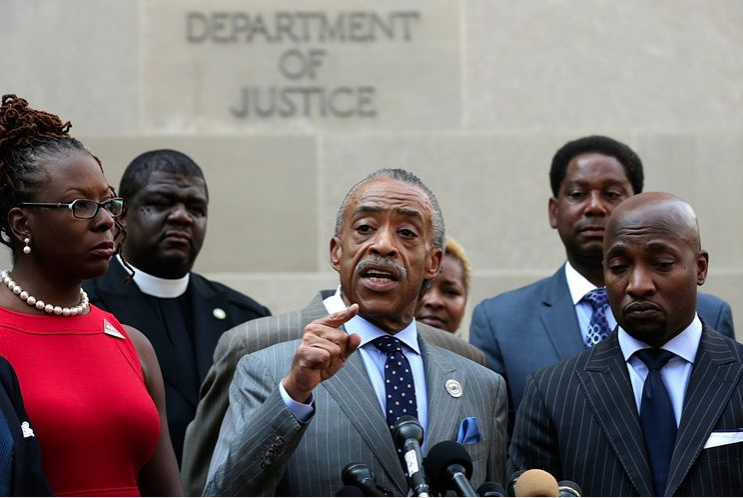Much has been made lately of the self-defense legal doctrine of Stand-Your-Ground, mostly for political purposes unrelated to any actual legal application of the doctrine (for more on this, see here: Stand-Your-Ground: Gun Control Zombies Exploit Grieving Black Community).
Stand Your Ground Does Not Make it Legal to Just Kill on a Whim
Those denouncing Stand-Your-Ground characterize it as something “new,” a misguided initiative adopted in recent years by state legislatures that has now been clearly demonstrated to have profoundly negative unexpected consequences. “Why, under Stand-Your-Ground you can shoot and kill someone just because! And it’s totally legal!”
This has become the common refrain of the pro-thug crowd who now begrudgingly concedes that Zimmerman had to be acquitted based on the facts and the law of the case–but the problem, they say, is not the thug, but the law. (For a discussion on why the Zimmerman case was never a Stand-Your-Ground case, look here: The Marissa Alexander Case Wasn’t About “Stand-Your-Ground” Either.)
Justifiable Killings Spiked in Florida After SYG Adopted – Self-Defense is Good
But are the consequences of Stand-Your-Ground either negative or unexpected? FBI data shows that there was an increase in justifiable homicides in the aftermath of Stand-Your-Ground, from an annual average of 13.2 during the period 2001-2005, to an average of 42 during 2006-2012. But isn’t that a positive and expected consequence of Stand-Your-Ground?
After all, a homicide that has been ruled justifiable is, by definition, one in which the person who killed was justified in doing so. Under American law, that means (with very rare exception) that the person they killed was reasonably perceived to be representing an imminent danger of death or grave bodily harm. That aggressor was subsequently killed by the use of defensive force.
What alternative outcome would the opponents of Stand-Your-Ground desire? That the defending victim of the aggressor be the one that was killed? Or perhaps merely maimed? Raped, Beaten down?
Highly aggressive acts of violence carry an inherent threat of death occurring to one of the participants, but the two participants are not operating on the same moral plane. The innocent defender is right in his use of defensive force, the aggressor is not. The innocent defender did not choose the initiation of violence, the aggressor did. If death must strike one of them, it is infinitely better that it strike down the thug than the law-abiding citizen.
To put it another way, it’s hard to get too worked up about an increase in the number of justifiable homicides occurring if the right people–the aggressors who initiated the deadly fight on an innocent–are doing the dying. When that’s the case, Stand-Your-Ground is working just fine, and the justified homicides will stop when criminal aggressors stop committing acts of aggravated violence on lawfully armed citizens. It’s the criminals’ call. (To hear this notion propounded by yours truly to a rather shocked NPR radio show, click here: Attorney Andrew Branca Participates on NPR Zimmerman Panel.)
The Venerable “New” Doctrine of Stand-Your-Ground
What about this concept that the Stand-Your-Ground doctrine is somehow “new.” It’s certainly true that a number of states in the last couple of decades have adopted explicit Stand-Your-Ground statutes. Florida’s was adopted in 2005, and my neighboring state of New Hampshire just adopted their version in 2011, overriding the veto of the Democratic governor, and many other states have adopted similar legislation in the intervening years.
In fact, however, Stand-Your-Ground is far older than today’s mainstream media and racial activists–but I repeat myself–would have you believe. A quick review of my own notes shows the earliest reference to the Stand-Your-Ground doctrine dates back to when the United States numbered a mere 38 states, the Indiana case of Runyon v. State, 57 Ind. 80 (1877). In that case the court noted:
The tendency of the American mind seems to be very strongly against the enforcement of any rule which requires a person to flee when assailed, to avoid chastisement or even to save a human life . . . [Therefore,] [t]he weight of modern authority . . establishes the doctrine that when a person, being without fault and in a place where he has a right to be, is violently assaulted, he may, without retreating, repel force by force, and if, in reasonable exercise of his right of self-defence, his assailant is killed, he is justifiable.
(As quoted in: Of the Enemy Within, The Castle Doctrine, and Self-Defense.)
Other venerable cases supporting are found strewn widely around the closing of the 19th century: People v. Lewis (a California case from 1897), Boykin v. People (a Colorado case from 1896), Ragland v. State (a Georgia case from 1900), State v. Hatch (a Kansas case from 1896), and State v. Partlow (a Missouri case from 1887).
So, it’s pretty clear that Stand-Your-Ground has been around a very long time. Indeed, it has always been the majority doctrine in the United States, with only a minority of states adopting a generalized duty to retreat before using deadly force in self-defense. Even today, only 17 states apply such a duty.
Why the Pendulum from SYG to Duty to Retreat, and Back to SYG ?
But what about the states that have more recently gone Stand-Your-Ground, and were previously “duty to retreat” states by either statute or court decision? Why the change? After all, the moral imperatives that argue for Stand-Your-Ground have existed in America for at least 136 years, yet these states had moved away from the Stand-Your-Ground doctrine despite these imperatives. What drove the change from Stand-Your-Ground to “duty to retreat”? And what drove the change back again?
The shift away from Stand-Your-Ground and towards the generalized duty to retreat was predicated on the notion that all life is precious, and before a defender can take the life of an attacker he must first exhaust every other option. And sometimes they really mean every other option. You hear that sentiment expressed by the anti-Stand-Your-Ground folks today. Listen to the pro-thug faction talking about the Zimmerman case and you’ll soon hear someone lament that poor George should have exhausted his brains on the sidewalk before being justified to use deadly force to stop Martin’s vicious attack. After all, it was just an “ass-whuppin.” Indeed, much of the State’s prosecution of Zimmerman was based on the (legally ludicrous notion) that Zimmerman’s injuries were too minor to justify his use of deadly force in self defense. (To see why this notion is ludicrous, click here: Zimmerman Update — How Much Injury Is Required Before Self-Defense is Justified?)
So, what happened? Why the shift back?
“An Unarmed Society is an Impolite Society”
First, as is typical of liberal policies, even (especially?) when well intended, they had massive and genuinely negative unexpected consequences. A criminal who knows he can seize physical control of his immediate surroundings with no fear of death or grave bodily harm being visited upon him is emboldened to do exactly that. You get more violent aggression from the criminal element of society, not less, when you force law-abiding citizens to cede control to violent criminals. It’s Heinleins’, “An armed society is a polite society,” turned topsy-turvy.
Duty to Retreat Greatly Facilitates the Destruction of Otherwise Solid Claims of Self-Defense
Second, the imposition of a generalized duty to retreat made defeating almost any claim of self-defense child’s play for hyper-aggressive prosecutors. In a fight for your life your attention is focused sharply on staying alive–at least, if you survived we can assume that was the case. After allocating the cognitive bandwidth to staying alive, there’s often not a whole lot left to allocate to identifying and carefully assessing the prospects for safely retreating down that particular path, or through that particular door, or behind that particular obstacle.
But in the cool, safe environs of a court room, the Prosecutor will point to ALL of these avenues of escape and demand the jury ask why not one of them were pursued–why they were not even attempted? And if he can convince them that a reasonably safe avenue of retreat existed and you failed to take advantage of it, failed to meet your generalized duty to retreat, before using deadly force, your use of that force is not justifiable under the law. Your entire claim of self-defense collapses out from under you, and instead your conduct has become an unlawful killing.
(Note: There are some duty-to-retreat states that do not entirely strip you of your right to claim self-defense if you failed to take advantage of a reasonably safe avenue of retreat. Under the doctrine of “imperfect self-defense” they allow you to mitigate what would have been a murder conviction to manslaughter. Recall that in the Zimmerman trial George was actually facing more jail time if convicted of the “lesser included charge” of manslaughter than if he was convicted of murder.)
States Became Fed-Up With Negative Consequences of Duty to Retreat, Switched Back to SYG
As prosecutors increasingly began to leverage this avenue of attacking self-defense claims, and society observed ever more miscarriages of justice with law-abiding defenders receiving lengthy, sometimes life-long, prison sentences because of the generalized duty to retreat, pressure gradually grew to return to the always more popular doctrine of Stand-Your-Ground.
And now you know the rest of the story.
NOTICE: “Law of Self Defense” Seminars are now being scheduled for the fall.
Andrew F. Branca is an MA lawyer and author of the seminal book “The Law of Self Defense, 2nd Edition” now available at www.lawofselfdefense.com and also at Amazon.com as either a hardcopy or in Kindle version, and at Barnes & Noble as hardcopy or in Nook version.
You can follow Andrew on Twitter on @LawSelfDefense and using #LOSD2, on Facebook, and at his blog, The Law of Self Defense.
 DONATE
DONATE
Donations tax deductible
to the full extent allowed by law.










